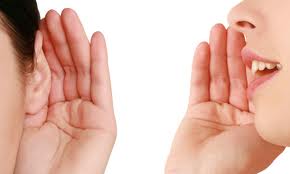Listening – Uncovering the Forgotten Communication Tool – Part I: The Basics
Most of us have heard the importance of communication in school, business and life, in general. Some of us have been taught some skills and tools to use in order to improve our use of communication. But very few, if any, have been taught the most important of all the communication skills: listening.

I have been fortunate to be trained in listening skills and, thankfully, am able to apply those skills in the work I do at LifeStories Alive. It is my pleasure to share some of the skills I have been taught and the lessons I have learned through practical application of those skills. Whether you are a businessperson, classroom teacher, or a parent working at improving communication with your loved ones, I hope you enjoy and put to use these valuable tools I share with you.
Let’s start with the basics. While these points may seem obvious, most of us need to be reminded of them so we can practice them more often.
Stop talking
That’s right. I believe it is impossible to intently listen if you are bumping your gums (a slang for talking). While some people argue that they can listen and talk at the same time, I have seen the disastrous consequences of messing this one up. You will see soon that in order to apply some of the skills of a good listener listed below, you must first shut up!
Listen with your whole body
When I first heard this concept, I thought I knew what it meant. With further study, and listening to this TED Talk by Evelyn Glennie, I have a much better idea. This concept includes important practices like maintaining eye contact, leaning forward, intently watching their body language, and listening without judging. To better imagine what this basic tool is all about, in the next conversation you have today, imagine you are severely hearing impaired. Then realize during that conversation how important it is to “listen” to everything that is happening, not just what is being said.
Don’t interrupt!
This is the hardest thing for many people to learn. I know how hard it was, and still is for me. Here are a couple of tools I have learned that help with this subject:
- The next sentence you say has to include at least one word from the last sentence they say. This will force you to not only listen, but to pause after they’re finished talking…because you don’t know if they are really finished talking.
- The next sentence you say has to include at least one word from the last sentence they say. This will force you to not only listen, but to pause after they’re finished talking…because you don’t know if they are really finished talking.
- Practice using pauses of different lengths after they are finished. This is especially important when dealing with different emotions. When sadness and tears are involved, people tend to pause longer between thoughts expressed. Let those long pauses happen before you say anything!
I hope these basics help you to become a better listener. Remember, it takes practice to improve, but improving your listening skills can make a huge difference in your life.
